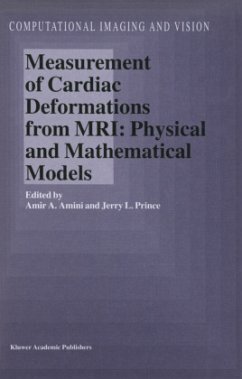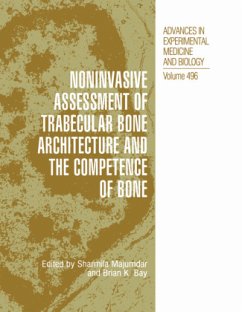
An Object-Oriented Approach to the Modeling and Visualization of Early-Stage Breast Cancer Tumors
Versandkostenfrei!
Versandfertig in über 4 Wochen
29,99 €
inkl. MwSt.
Weitere Ausgaben:

PAYBACK Punkte
15 °P sammeln!
Great strides have been made in controlling the progression of breast cancer, but medical professionals continue to rely primarily upon traditional mammography for early detection. Enhancing breast cancer detection capabilities-and thus reducing tumor detection time-should result in a reduction in mortality rates. The detection capabilities of mammography may be enhanced through improved modeling and visualization techniques. This thesis is an extension of initial research conducted at the Air Force Institute of Technology. Previous efforts focused on developing a mathematical model for simula...
Great strides have been made in controlling the progression of breast cancer, but medical professionals continue to rely primarily upon traditional mammography for early detection. Enhancing breast cancer detection capabilities-and thus reducing tumor detection time-should result in a reduction in mortality rates. The detection capabilities of mammography may be enhanced through improved modeling and visualization techniques. This thesis is an extension of initial research conducted at the Air Force Institute of Technology. Previous efforts focused on developing a mathematical model for simulating the growth of cancer within unconstrained 3-dimensional space. The research also explored the behavior of the model as it interacts with simulated breast tissue structures. This effort implements improvements suggested by the previous research and explores alternative modeling approaches. These approaches are implemented using object-oriented software engineering techniques within the Java programming environment. The model is first replicated in unconstrained 2- and 3-dimensional space, and then embellished to more closely model the semi-autonomous behavior of cancerous cells. This study concludes with a model built upon a rule set for controlling cell behavior. This work has been selected by scholars as being culturally important, and is part of the knowledge base of civilization as we know it. This work was reproduced from the original artifact, and remains as true to the original work as possible. Therefore, you will see the original copyright references, library stamps (as most of these works have been housed in our most important libraries around the world), and other notations in the work. This work is in the public domain in the United States of America, and possibly other nations. Within the United States, you may freely copy and distribute this work, as no entity (individual or corporate) has a copyright on the body of the work. As a reproduction of a historical artifact, this work may contain missing or blurred pages, poor pictures, errant marks, etc. Scholars believe, and we concur, that this work is important enough to be preserved, reproduced, and made generally available to the public. We appreciate your support of the preservation process, and thank you for being an important part of keeping this knowledge alive and relevant.












